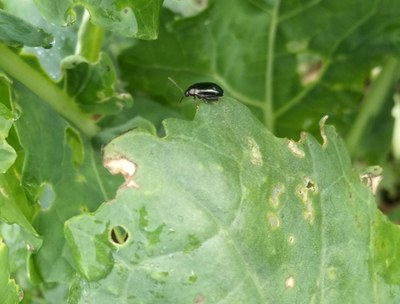Landscape effects on endosymbionts of the cabbage stem flea beetle

In many herbivorous insect species, including aphids and weevils, insect endosymbionts—organisms that live inside insects—can have far-reaching effects on insect biology. Insect endosymbionts confer numerous traits, including protection against natural biocontrol agents, which can reduce their effectiveness as sustainable pest management solutions. The cabbage stem flea beetle is a significant herbivorous insect of agricultural importance throughout Europe and herbivorous insect management is impeded by a high incidence of insecticide-resistant populations across Europe. However, little is known about intra-specific variation of endosymbiotic relationships in the cabbage stem flea beetle, and less is known about how these relationships might influence insect biology. Therefore, successful management of cabbage stem flea beetle is becoming increasingly reliant on sustainable, non-chemical practices and an agroecological approach.
Characterizing the endosymbiotic diversity of the cabbage stem flea beetle will be the first step in determining whether sustainable management of cabbage stem flea beetle might be influenced by herbivorous insect intra-specific variation, as is the case for other important herbivorous insects (e.g., aphids). This project will characterize the endosymbiont community of cabbage stem flea beetles and investigate whether landscape diversity influences the endosymbiotic profile found in cabbage stem flea beetle populations collected from fields that have contrasting landscape structures.
Led by: Dr. Daniel Leybourne
Team: Prof. Dr. Emily Poppenborg Martin
Year: 2021
Funding: British Ecological Society
Duration: 11.01.2021 – 06.01.2023
